Philips OLED754 4K TV review: the cheap OLED TV of your dreams, and a T3 Awards 2020 winner
Coming in under £1000, the Philips OLED754 may be the best OLED bargain around right now, and the HDR spec is cutting edge

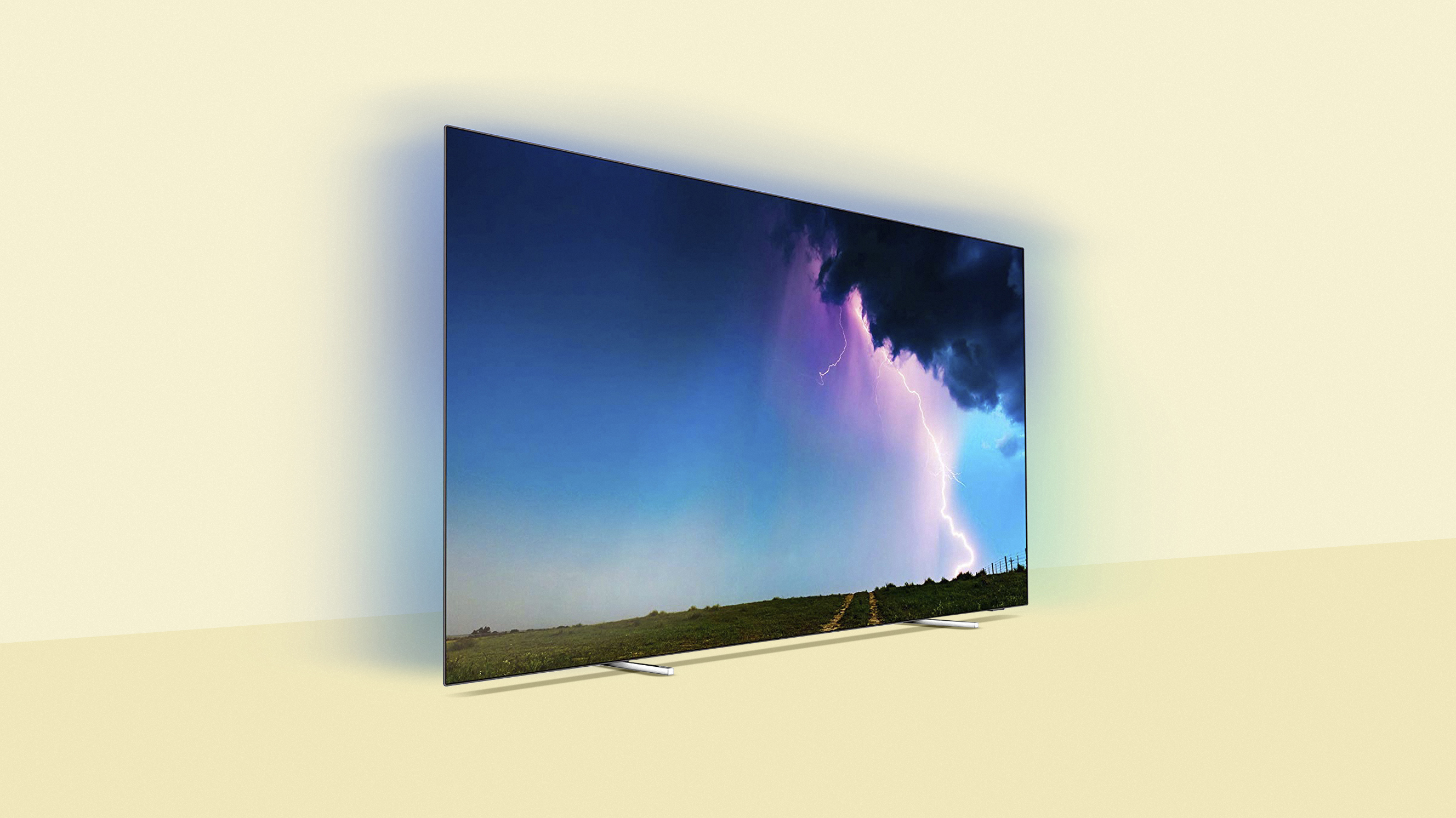
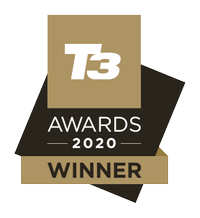
The Philips 754OLED is the best budget OLED TV we've tested – there's no compromise on picture quality, and the design is premium. It's less advanced on smarts and audio, but the price more than makes up for that.
-
+
Glorious OLED image quality
-
+
Universal HDR support
-
+
Three-sided Ambilight
-
+
Excellent HD upscaling
-
-
Simple smart platform
-
-
Average audio
Why you can trust T3
You don't need to break the bank to buy an OLED TV, the Philips OLED754 is the perfect example of that. Far from an impulse purchase, we are so used to seeing OLEDs come at an eye-watering price, but the market is changing with affordable OLEDs slowly becoming more common. The Philips OLED754 is a pioneer such a TV, having won our T3 Awards 2020 title as the Best TV under £1,000.
Philips' entry-level OLED is one to watch if you’re after a superior picture without the high-end price tag – especially at the 55-inch size we tested (though a 65-inch version is also available).
So how exactly have they done it? Look closely, and you’ll spot some cost-cutting. The P5 picture engine is a generation behind that to be found in the newer Philips 804 and 854 models. There's no Bowers & Wilkins sonic sophistication here either, as in some of Philips' sets, making the audio seem pretty ordinary. But the viewing experience it offers is comfortably on the right side of premium, and you also get three-sided Ambilight, the brand’s long-serving mood-lighting tech.
Delightfully, despite the low price you get both kinds of dynamic HDR supported here: HDR10+ and Dolby Vision. Plenty of much more expensive TVs don't support both, so this is a bit of a coup by Philips.
The LG B9 is probably the nearest competitor to this TV in terms of image quality, but that model lacks the support for both kinds of HDR, and the illuminating Ambilight, while costing four figures still.
It’s worth noting that the UK Philips TV brand and US Philips brand are run entirely differently, so there’s no US counterpart to this TV.
- Want to go even cheaper? Here are the best TVs under £500
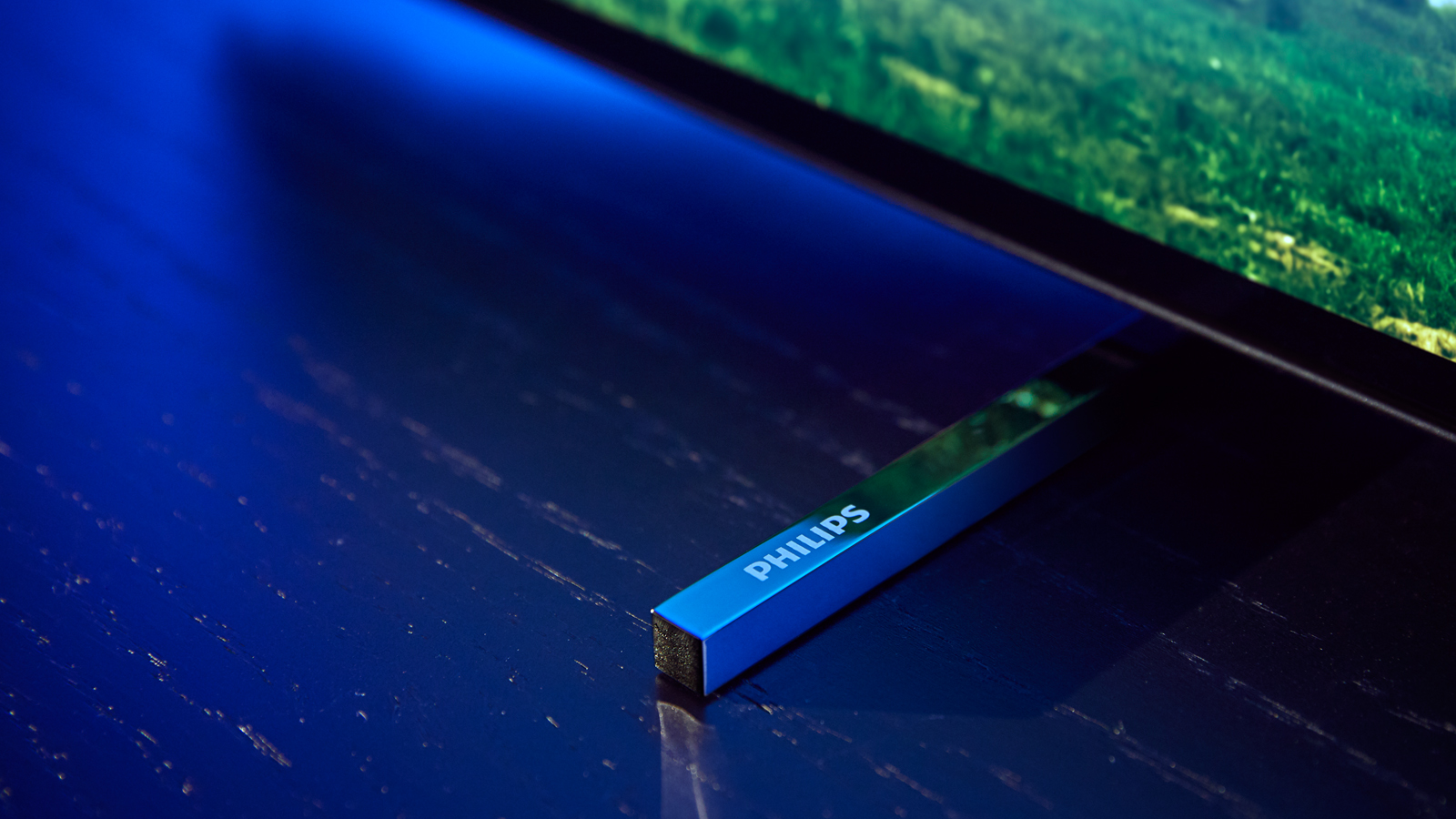
Philips OLED754 review: Design
When it comes to cosmetics, the OLED754 celebrates perfunctory minimalism. The bezel is regulation thin, surrounding a panel that sits on two edge-place feet. Don’t plan on popping a soundbar directly in front of it, though: there’s virtually no gap ‘twixt screen and boots.
Get all the latest news, reviews, deals and buying guides on gorgeous tech, home and active products from the T3 experts
The quality of finish is high. We particularly dig the nice brushed metal effect on the back of the panel.
The remote handset, on the other hand, is rudimentary, made interesting purely by the addition of Netflix and Rakuten TV buttons.
Device hook-up shouldn’t be a problem. We’re served four HDMI inputs, all of which support 4K HDR at up to 60Hz, plus component/analogue AV, an optical digital audio output, and two USBs.
There's no next-gen HDMI 2.1 here, but that's no surprise, and is largely unnecessary anyway, since this TV doesn't support 8K or 120fps or the other features the new connection is intended for.
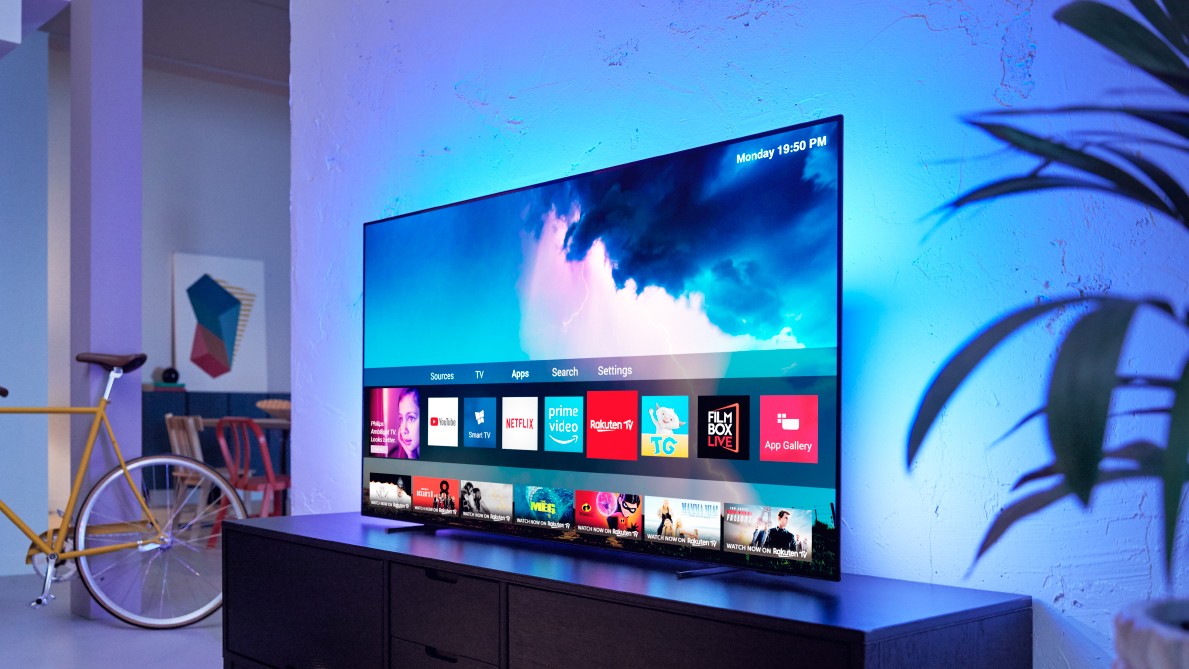
Philips OLED754 review: Features
Unlike the rest of Philips' OLED fleet, the OLED754 doesn’t use an Android smart TV OS. Instead we get Philip’s own cut-back Saphi platform. Based on Linux, it’s a lot less ambitious, although conversely that works in its favour.
It delivers exactly what’s required of a connected set, namely the leading streaming apps (Netflix, Amazon Prime Video, Rakuten TV, YouTube), plus lesser apps, without undue complication or fuss.
There’s also fully integrated catch-up TV, courtesy of the Freeview Play tuner.
Ambilight will be familiar enough to most. There are no differences between the implementation here and that on more expensive Philips models. You can use it to follow onscreen action, or bathe your walls in a solid colour. And if you really want a light show for the ages, it can be integrated with a Philips Hue smart lighting system.
As for gaming, the OLED754 is borderline OK. We measured input lag at 32.8 mm (1080p/60fps) in its Game picture mode. To put that in context, we generally applaud 30ms or lower.
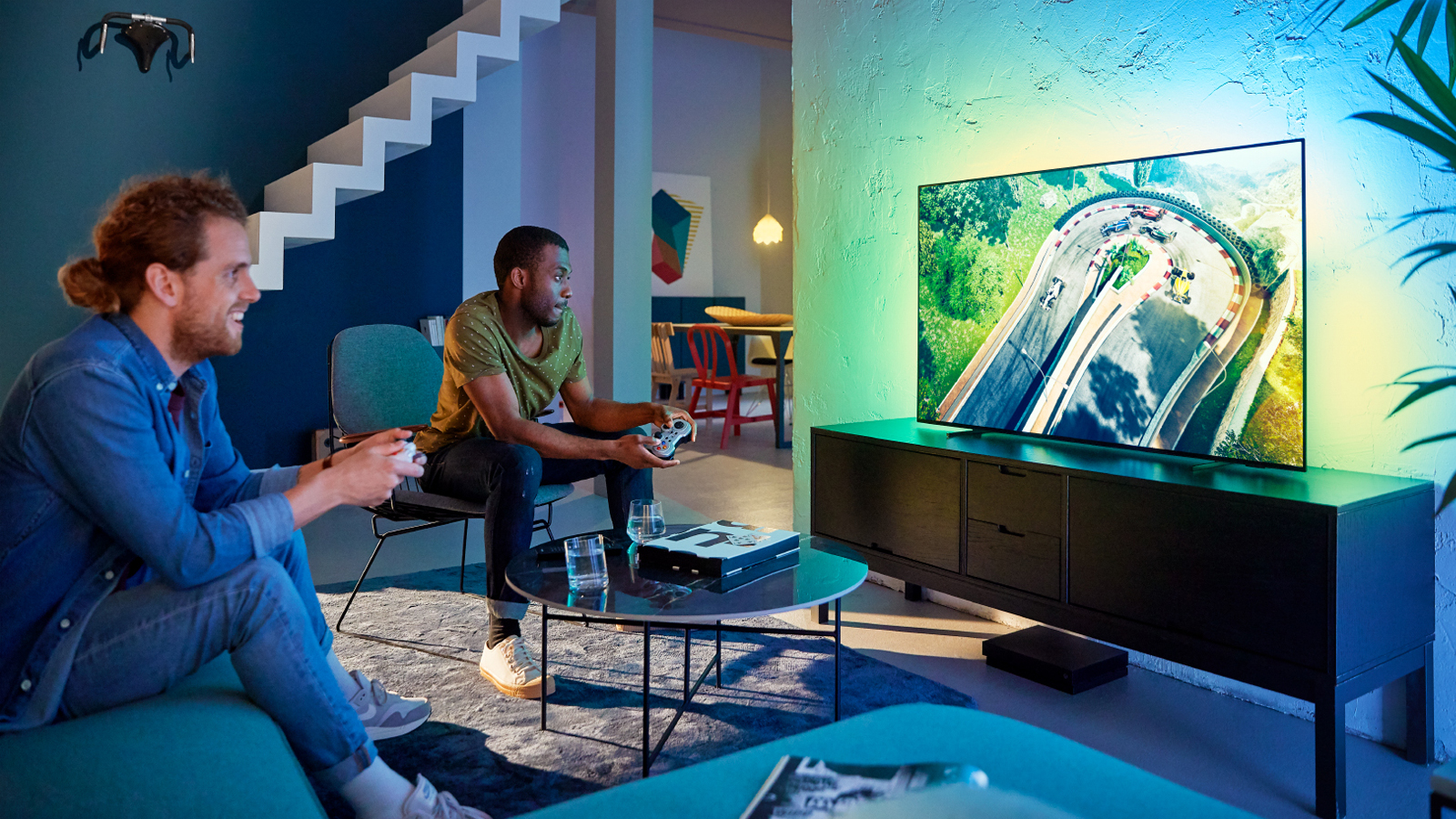
Philips OLED754 review: Performance
This Philip’s visual allure is obvious as soon as you power up some sources. Not only are blacks perfectly deep, but there’s good near-black shadow detail too. This stops images looking two-dimensional and over inked.
Colour richness, always a strong point for Philips, is pronounced. The screen delivers wide colour gamut imagery that’s often mesmerising. Run some anime in Vivid mode for all the candy.
While at its best with 4K sources (be they streaming apps or UHD Blu-ray), Philips P5 image processor also does a solid, seamless job upscaling HD too.
HDR peak brightness was measured at over 600 nits using a 10 percent measurement window, rising to more than 700 nits with a five percent window. The latter is probably more indicative of how HDR brightness peaks tend to be used – small and generally fleeting. These results are lower than the latest and greatest sets, but are very much in line with its cost.
But here’s the clincher. Philips is also supporting both key dynamic metadata standards: Dolby Vision and HDR10+. It’s also good for HLG, the broadcast HDR standard. Only Panasonic is comparably generous.
The set’s audio performance is good enough for casual goggleboxing. It uses two 8W down-firing mid-high drivers, bolstered by a 24W woofer and passive radiators on the rear. That said, it’s definitely worth investing in one of the best soundbars, or home cinema separates.
Philips OLED754 review: Verdict
If you’re looking for a genuine OLED bargain, then this Philips is it. Image quality is terrific – you’ll need to spend significantly more to get significantly better picture quality – and Ambilight fills every living room with the aurora borealis, which can only be a good thing.
There are caveats: the smart OS is fairly basic, and the audio borderline average. But to be frank, neither amount to much of a compromise, making this a hugely attractive option for 4K buyers on a budget.
For over 25 years, Steve has been casting his keen eyes and ears over the best that the world of TV and audio has to offer. He was the creator of Home Cinema Choice magazine, and contributes to huge range of technology, home and music titles along with T3, including TechRadar, Louder, Ideal Home, the i newspaper, and more.

